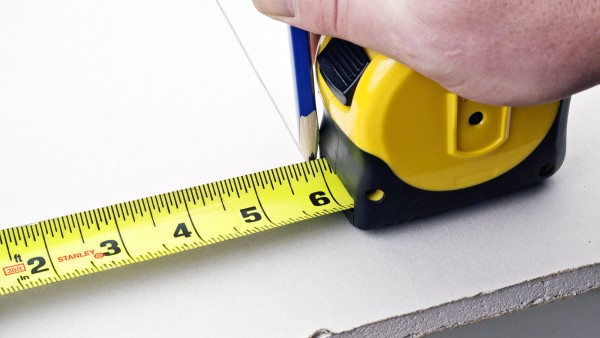How to Read a Tape Measure – With regard to construction and craftsmanship, making accurate measurements can make the difference between a great finished product and an inferior one. Fortunately, with the right approach, using a tape measure can be an easy and quick way to get the information you need about the project. Knowing how to use and read a retractable tape measure and a traditional bar-type can be a great advantage for anyone doing the manual work so you learn today and start measuring! (Note: This tutorial explains how to read metric tapes using Anglo-Saxon unit system measurements).

How to Read a Tape Measure
Step by Step
- Use the marks with a large number of inches. On a tape measure with imperial units, the largest marks usually mark 1 inch. These are usually marked with thin, long lines and fairly large numbers.
- Generally (but not always) after every 12 inches you will find a mark of one foot. This usually has a different color than other brands, usually, it is red, as opposed to normal black marks. After each foot mark, the following numbers for each mark are in. They will be repeated from 1 to 11 or again will continue counting. This may vary by tape.
Note that the line that is next to the number each tick in, not the number itself. - Use the largest marks between two marks inch by half an inch. A half-inch mark is always the center of the two-inch marks. This almost always has the second-largest mark (the largest is 1 inch). You will find a half-inch mark between each 1-inch mark, but there is two half an inch per inch.
- Note that starting with the one-inch marks, not all lines can be marked with numbers. In this case, you have to use the marks on each side to guide you. For example, the half-inch mark between the inch equals three of four 3 1/2 inches, even if it is not indicated.
- Use the smaller one between the middle inches for the quarter-inch lines. After half an inch comes from the quarter inch. These marks are smaller (and sometimes thinner) than half an inch, but generally larger than the contiguous marks around it. These have a uniform mark between every half inch and in the space of 1 inch. There are four quarters of an inch to 1 inch.
- It should be noted that sometimes the quarter-inch mark lines are the same size as an eighth of an inch. In this case, remember that two-eighth inch forms a quarter inch. Counts up to the second eighth mark of post-marking an inch, this is a quarter-inch (and the line at the same spot on the other side of the half-inch mark is three-quarters of an inch).
- Use regular small marks for eighths of an inch. Mark the eighths of an inch are even smaller than a quarter inch. These marks are in the middle of the marks of an inch, a quarter inch is between a quarter of an inch and a half-inch, and so on. There are eight-eighths of an inch to an inch.
- Use the small adjacent markers to sixteen inches. Shorter, most all tape measures are marks lines sixteen inches wide. There are 16 of these small marks per inch, four in every quarter inch.
- Please note that some very accurate measuring tapes even have thirty-one-tenths or even four-sixties marks! Use the same pattern of recognizing these tiny measures.
- inch segments sum to determine the overall length. When you measure the length, getting an exact value requires only seeing where the tape is aligned. First, mark the point where the tape is aligned with the end of the object you measure. Find the nearest inch before this point. Then locate the nearest half-inch before this point, then the nearest quarter inch, and so on. inches and fractions of inches Add up to get a precise measurement. This is much easier than you think, please review the example provided below.
- Let’s say we measure beyond the mark of an inch, a quarter of an inch, and an eighth of an inch. To determine the extent, we must add:
1 (our inches) 1/4 (our quarter inch) 1/8 (our eighths of an inch).
There are two-eighths of an inch to a quarter-inch-so we can rewrite it as:
1 2/8 1/8 = 1 3/8 inches.
Add fractions like 1/2, 1/4, 1/8, etc. It can be tricky. If you need help, see our article ” Adding Fractions with Different Denominators “.
(Visited 139 times, 1 visits today)







Leave a Comment